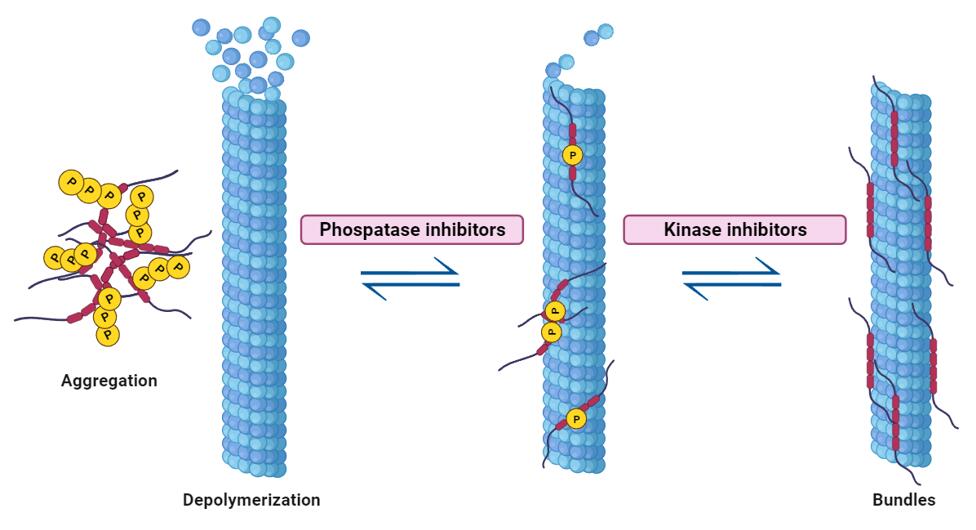Accumulation of phosphorylated tau is a key pathological feature of Alzheimer's disease (AD). Tau is a protein that normally plays a role in stabilizing microtubules in neurons, which are essential for maintaining the structure and transport of neurons. However, in Alzheimer's disease, tau undergoes abnormal phosphorylation, leading to the formation of neurofibrillary tangles (NFTs) inside neurons. As tau becomes increasingly phosphorylated, it detaches from microtubules and instead begins to form insoluble tangles, which disrupt the normal functioning of neurons. This process ultimately leads to synaptic impairment and neuronal dysfunction.
In vivo studies using kinase inhibitors, which aim to reduce tau phosphorylation levels, have shown promise as a potential therapeutic approach for Alzheimer's disease. These inhibitors target the enzymes responsible for adding phosphate groups to tau proteins, which is a key step in the abnormal phosphorylation process.

Creative Bioarray has engineered cellular models for drug discovery targeting tau kinase and phosphatase activity. Image analysis-based bundle quantification facilitates the identification of tau kinase and phosphatase inhibitors.
Online Inquiry